If you feel like taking a break from the hustle and bustle, big lights and neon signs, then head down to the Shinjuku Gyoen. This enormous urban oasis is located only 10 minutes away from Shinjuku station. Since it was initially built as an Imperial Garden, the landscaping is far superior to any public park I’ve ever been to. During Cherry Blossom season, this is one of the most popular spots to sit and enjoy thousands of those pretty pink petals as they fall like snowflakes all around you.
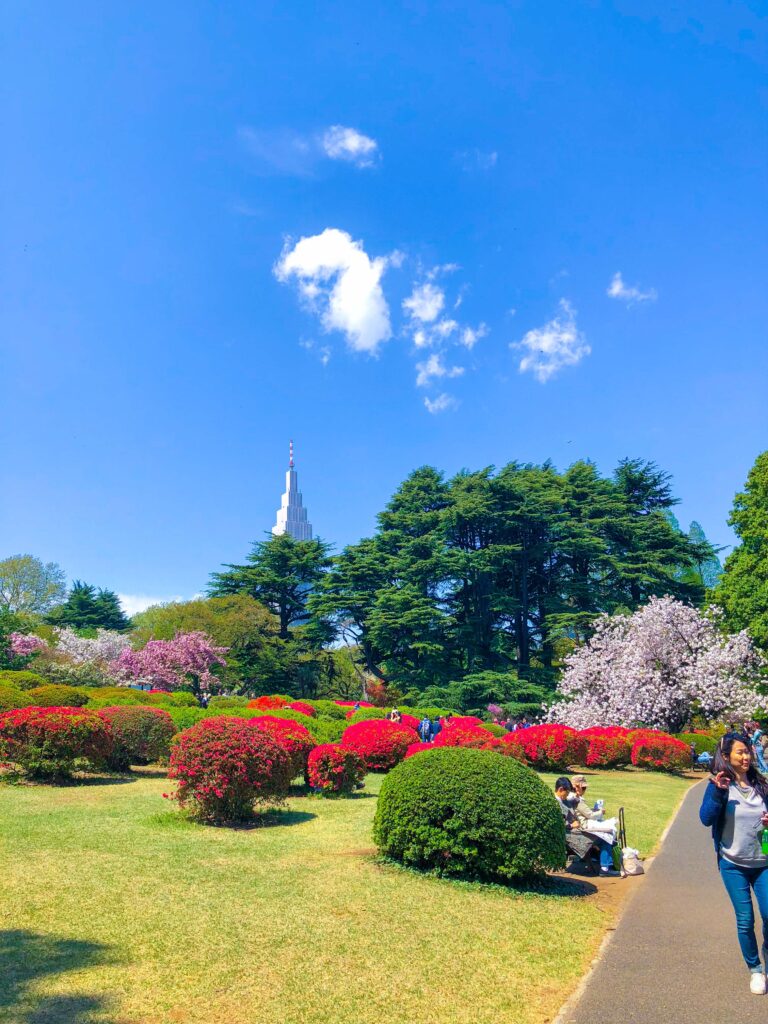
When we were visiting Tokyo during Cherry Blossom season, we had heard that this park was one of the best places to come to enjoy the last of the season. The sakura had bloomed early this year, and we were hoping we might be in luck to find some trees with a few petals still clinging to the buds when we arrived. Lucky for us the park is home to a variety of different sakura trees which are known to bloom throughout the spring.
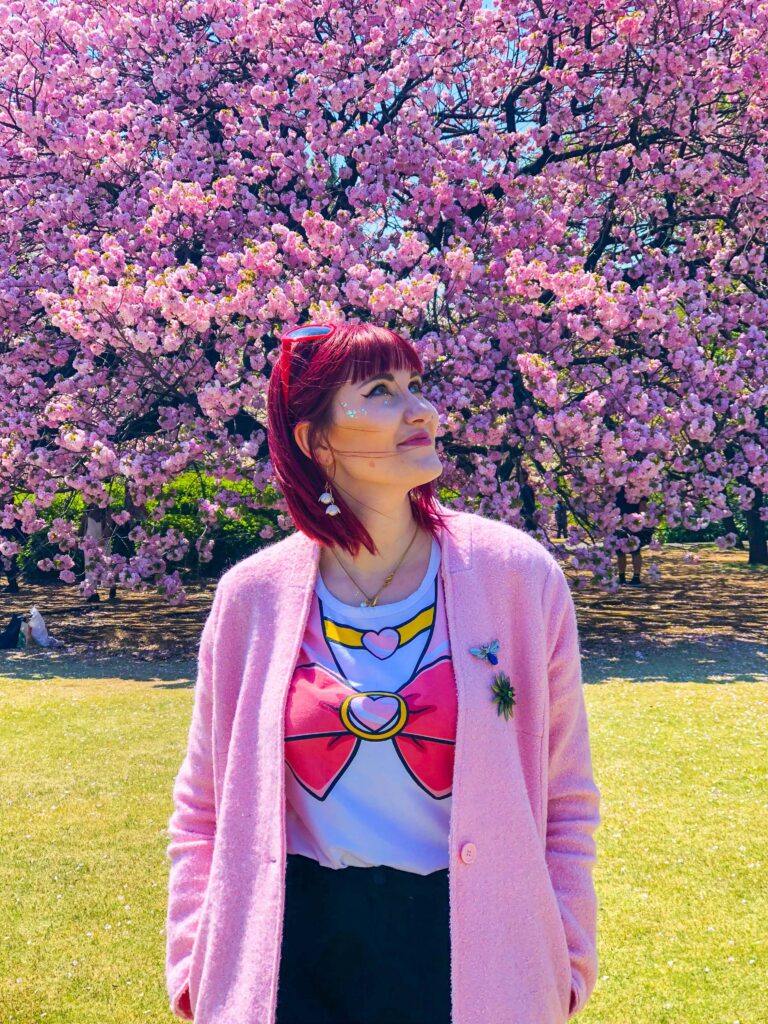
Access
The garden has three separate entrances around the park to make it easy to enter from various parts of the city. The largest gate (Shinjuku Gate) is located 10-minutes from the Shinjuku JR station or five minutes from Shinjukugyoenmae Station. The Okido Gate, is located farther east on the north side five minutes from Shinjukugyoenmae Station. There is one last gate (Sendagaya Gate) located on the south side. This gate is accessible from the nearby JR Sendagaya Station.
Hours and Admission
To enter this park, you do need to pay an admission fee. This means the park is much less crowded. Admission costs 500 yen. The gardens are open from 7:00 am if you come in from the Shinjuku Gate. The other two gates only allow access starting at 9:00 am. The park closes at 4:30 pm, with the last admission at 4:00 pm. The park is closed on Mondays for maintenance. During cherry blossom season and chrysanthemum festivals, the gardens remain open 7 days a week due to the overwhelming popularity.


Accessibility
If you require accessible access, exit through Shinjuku Station or Shinjukusanchome Station. These stations do not require walking up to any stairs or escalators. From there, head over to the Shinjuku Gate. Once you pass through the admission gate, you will be provided with a map in the language of your choice. The map is wonderfully clear in identifying wheelchair-friendly areas. Great effort was taken in ensuring the part is friendly for those with disabilities. There are various washrooms in the park which are accessible. The map also points out pathways which are easier to traverse in a wheelchair or any areas of difficult terrains (such as gravel or steeper slopes).
History
Initially, the park wasn’t owned by the city; it was private property. The shōgun bequeathed the land to Lord Naitō, who built a grand garden onto his palace in 1772. Over the years, the gardens passed hands, down from a private residence to an agriculture centre to a public botanical garden in 1879. The garden’s original layout was destroyed during the air raids of WWII. After the war, much effort was taken to restore and rebuilt the park back to its original design.
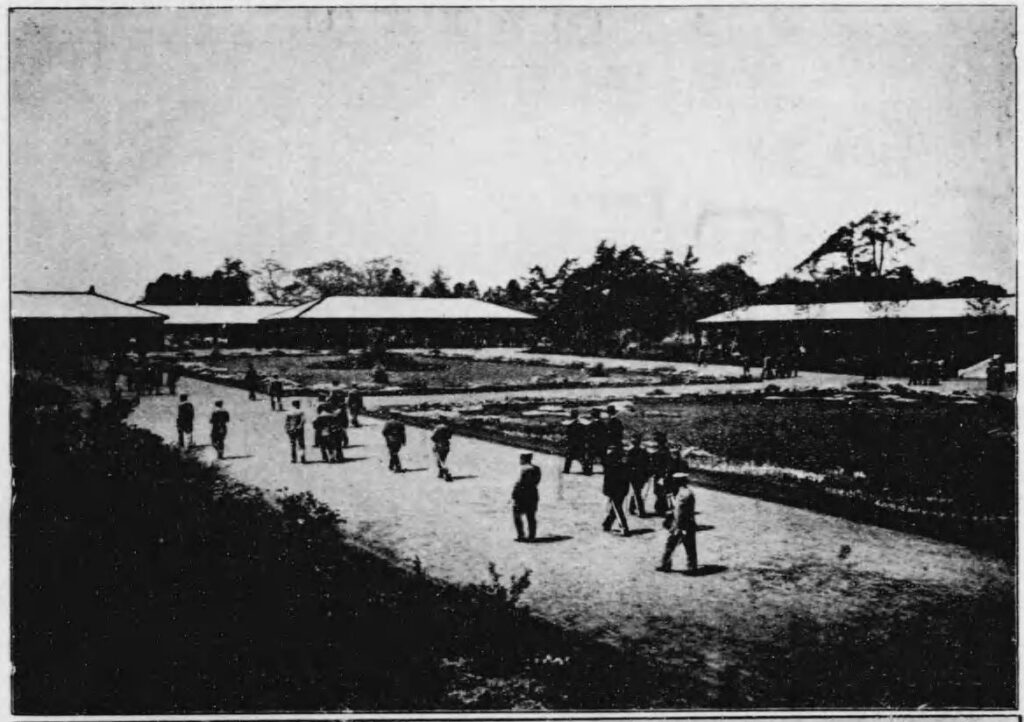
Design of the Gardens
The Shinjuku Gyoen garden is spread over 58.3 hectares! The gardens were designed in three distinct styles: French formal, English landscape and Japanese traditional. The Japanese Garden is decorated with a series of large reflecting ponds. Connecting the different areas of the garden across the pond are various large stones, gravel pathways and an iconic Japanese bridge.
You’ll find a large structure called the Kyu-Goryotei or the “old palace” in the center of the Japanese garden. This building is, oddly enough, designed in Chinese-style. This is because it was donated by the Japanese residents of Taiwan for the imperial wedding celebrations. Today, it a favourite place for photographs as you look out at the beautiful pond on the other side.
Take a closer look at the pond and see if you can spot some of the carp which are stocked in the water. Carp symbolizes the Japanese fighting spirit due to their hardy nature. You can also see if you can see any of the many turtles, sunbathing on the rocks around the pond.
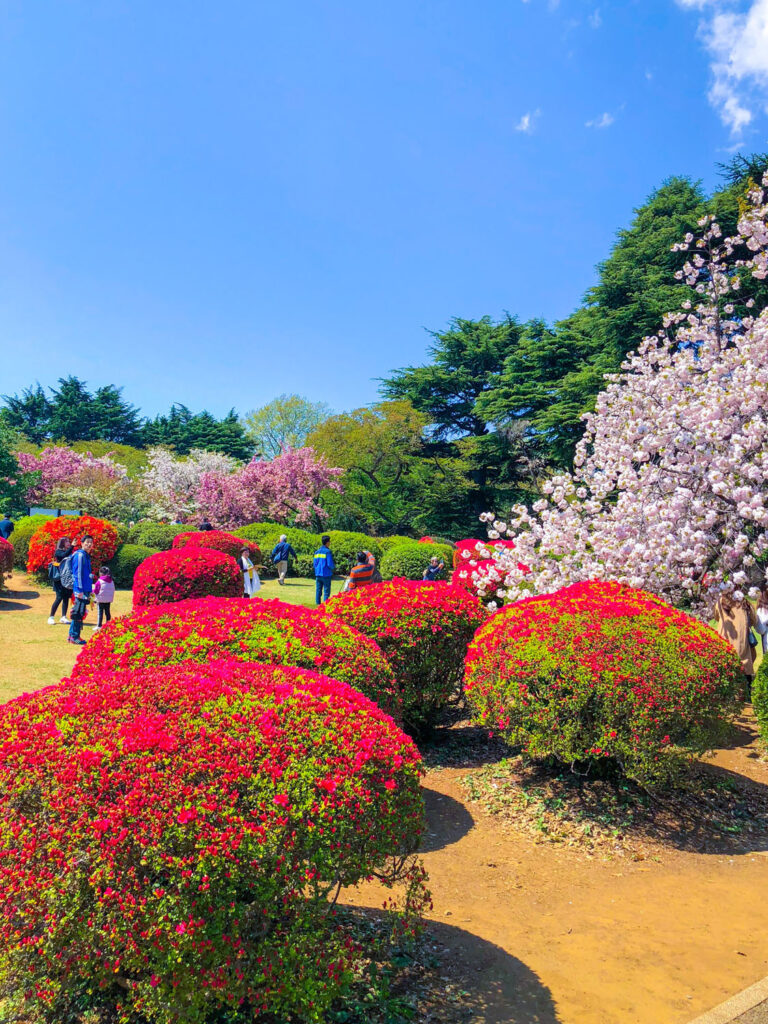
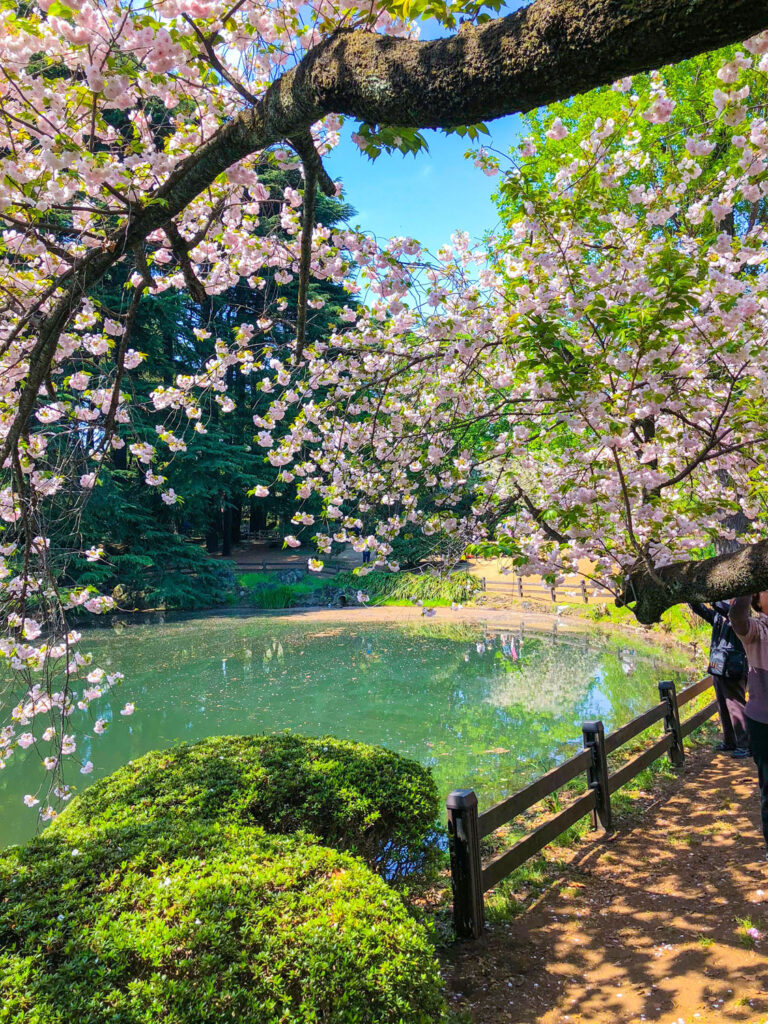
French Formal Gardens
The Formal French Gardens are dominated by perfect beds of roses surrounded by the Avenue of Sycamore trees. Sycamore trees are native to central, eastern and southern Europe, having been introduced by the Romans. There are eight hundred feet of roses with varieties all originating outside of Japan.
English Landscape Garden
The English Landscape Garden features this large open lawn surrounded by cherry blossom trees. This area is a favourite for children to run freely and play on the manicured grass.
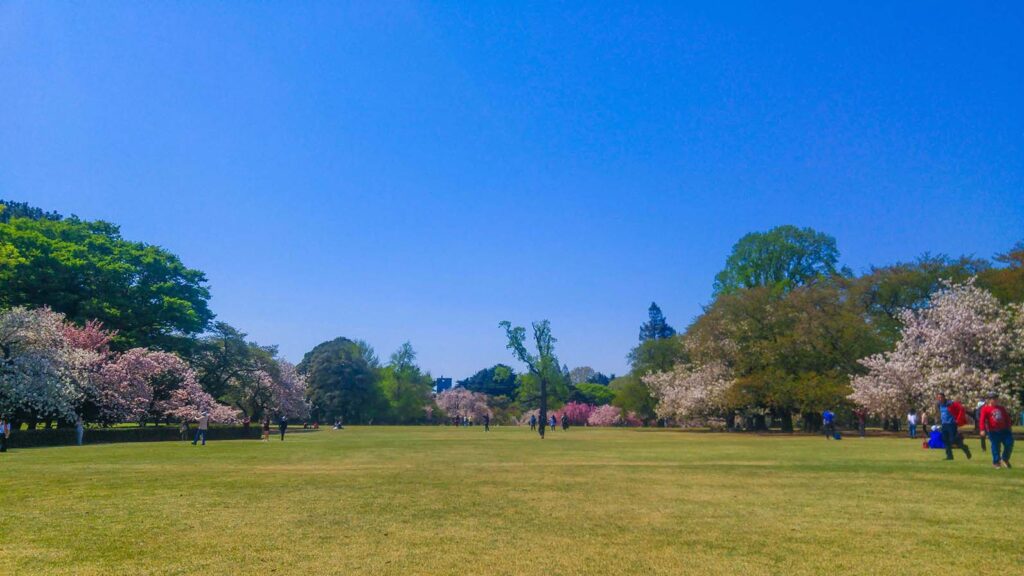
There are over 20,000 trees to be found inside the park. You can spot tall Himalayan cedars, tulip trees, cypresses, as well as a stock of 1,700 tropical pants inside the greenhouse. Of the 20,000 trees found here, 1,500 of which are Japanese cherry blossom trees.
Variety of Sakura Trees
What makes this park a little different is that there are different varieties of cherry blossom trees. Some areas only have one kind which means there is only one opportunity to see the flowers. Having different species means the trees bloom at different times of the year. This ensures that people can enjoy the season in the park for a more extended period.
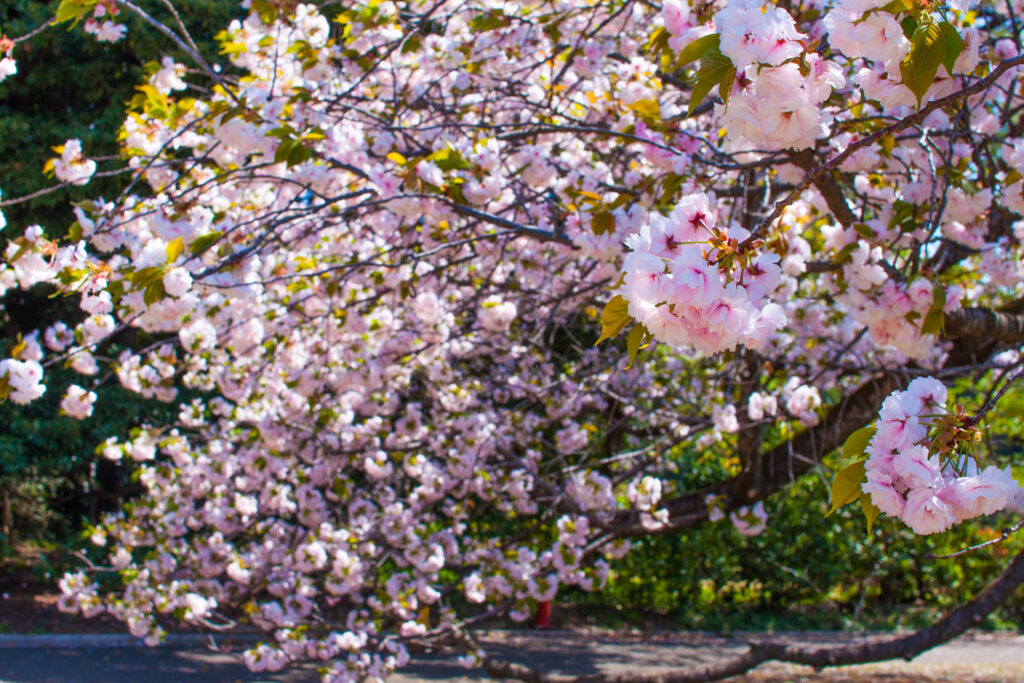
Weeping Cherry Tree
The Weeping Cherry tree is the first to bloom in early March. By far, these trees are the most dramatic. Their flowers delicately covering the long tendrils, reaching towards the the ground.
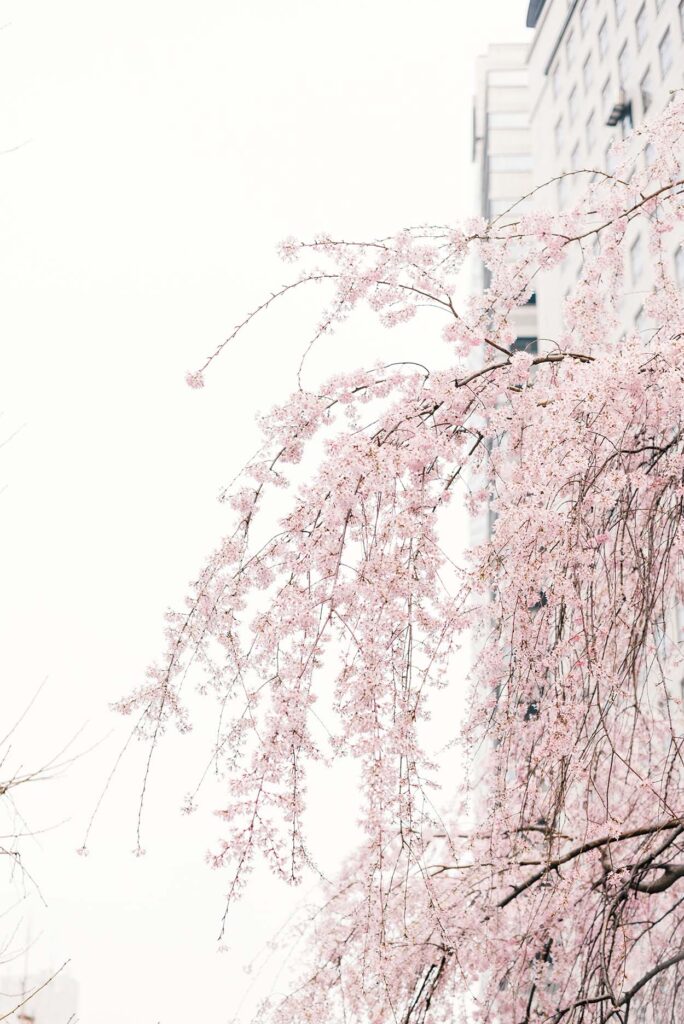
Somei Cherry Trees
Then there are the Tokyo Cherry or Somei trees. These are most commonly found in Tokyo prefecture and start blooming in early April. This is the most popular species you’ll find all over the city. The variety has only five petals and is pale pink in colour. From afar these flowers almost appear to be white.
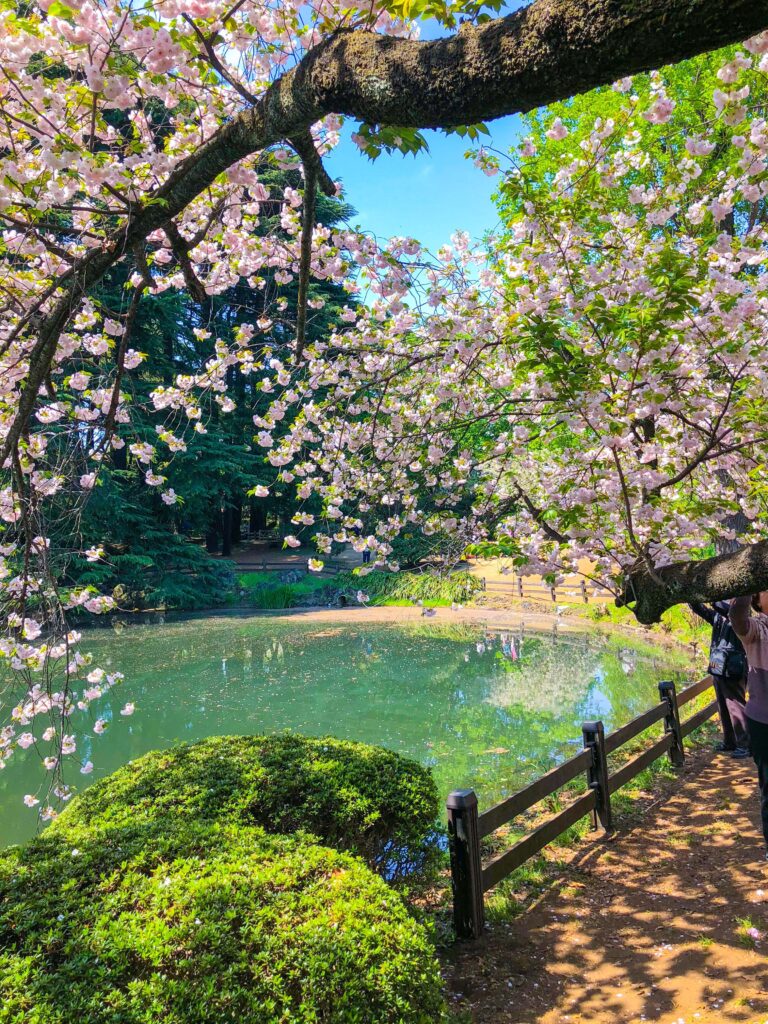
Kanzan Cherry Trees
The final kind of tree found in the park is the Kanzan Cherry trees. These are the last to bloom in late April. These are my favourite variety. They are known for their “double blossom.” There are as many as 50 petals on each of these flowers. They are a deep pink colour and have the most fantastic contrast against the bright blue sky.
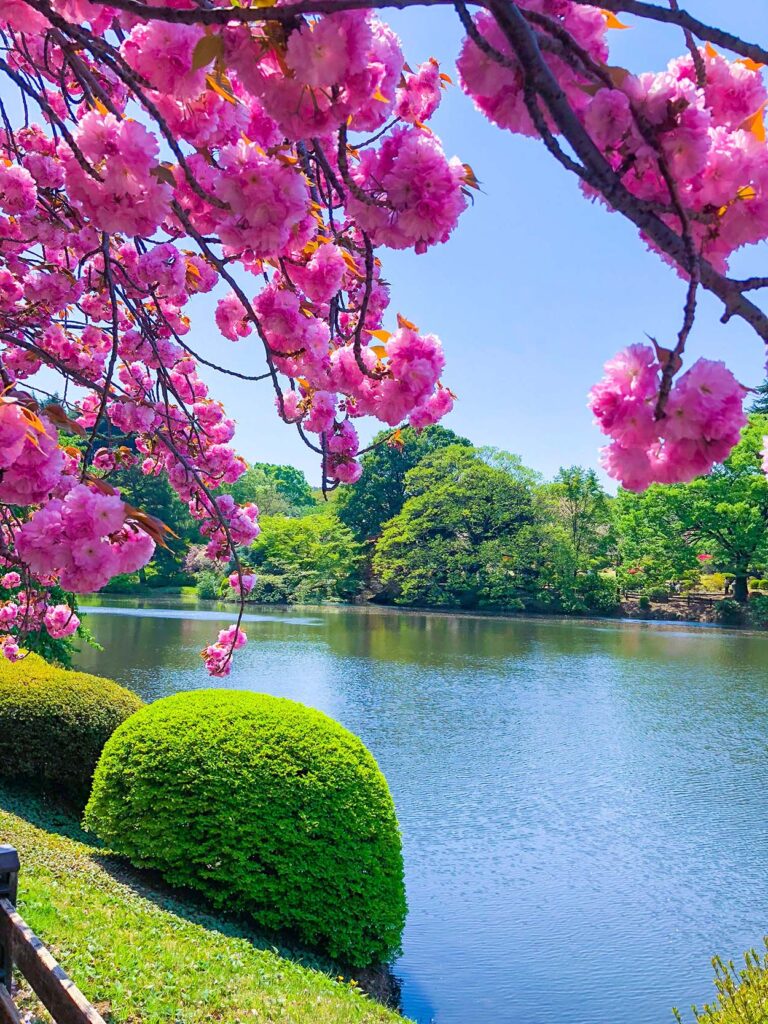
Shinjuku Gyoen Throughout the Seasons
Springtime
Springtime is the most popular time to visit the park as this is when the cherry blossoms are in full bloom. Since the park is so large though even at the busiest times, you never feel too overwhelmed. Bring your picnic blankets and relax here under the precious petals.
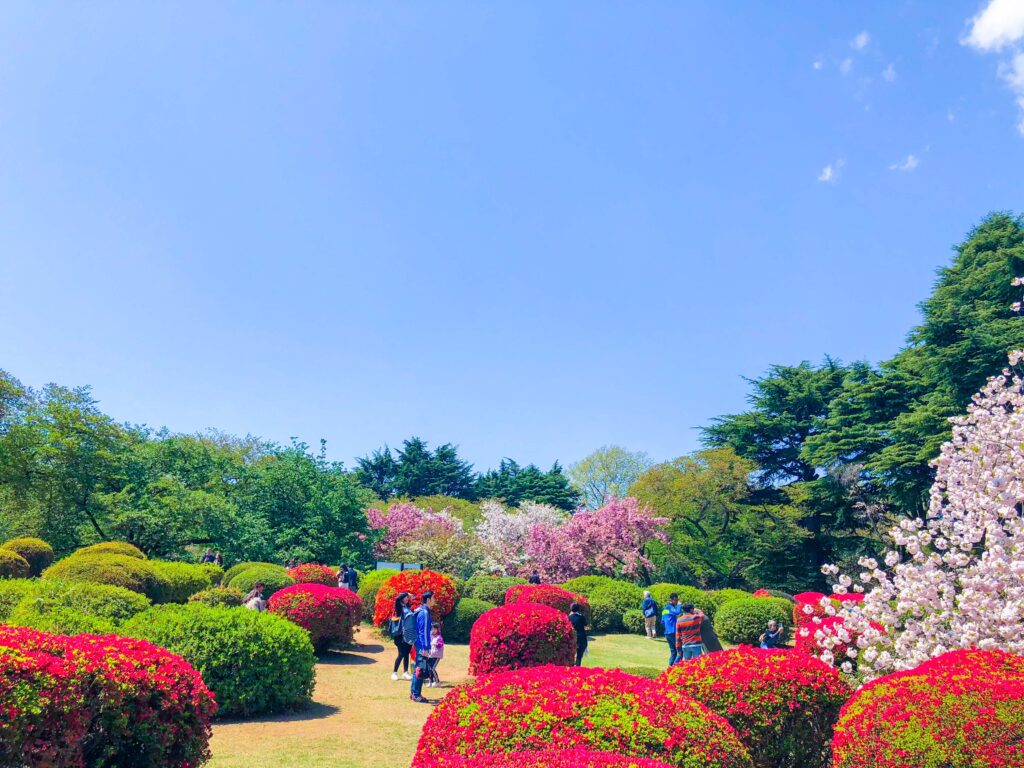
Summer
In the summertime, the garden blooms with hydrangeas, one of the most popular seasonal flowers. Also in the summertime, you can wander around the French garden which is covered in an efflorescence of blooming roses!
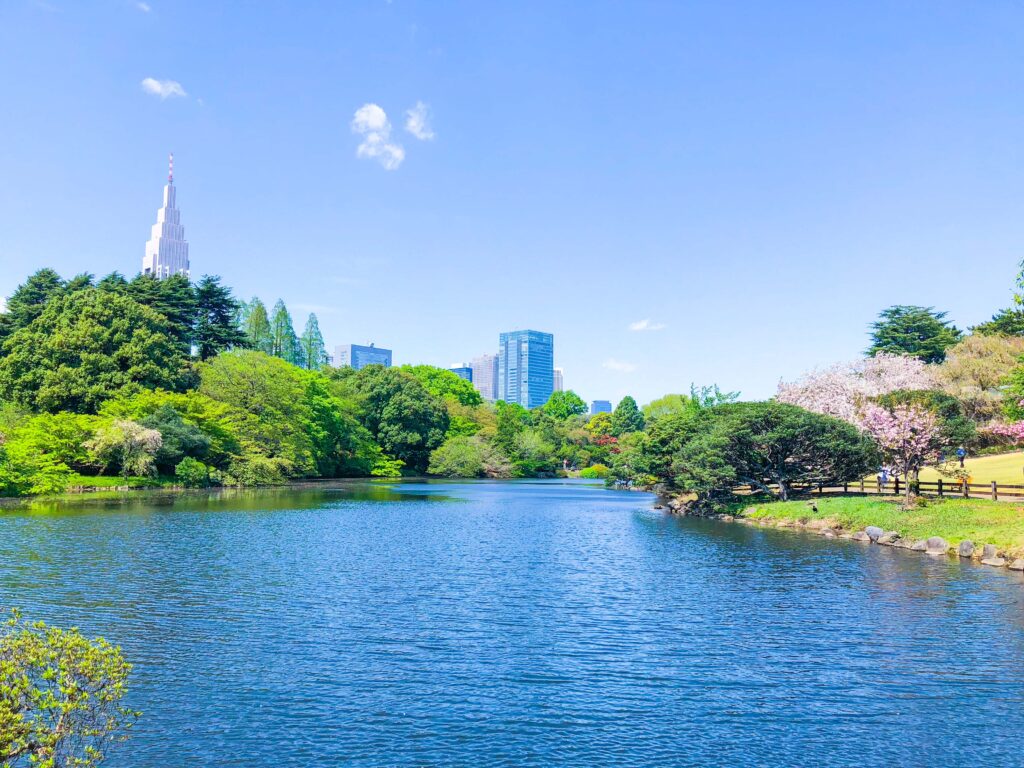
Fall
Outside of Sakura season, the most popular time to visit is during the park is during the chrysanthemum festival. This festival has been running since 1929 and is a very popular event for the locals. The festival usually runs for two weeks beginning in November, but it depends on the flowers’ blossoming time.
In the Autumn, all the trees change colour and create a magical sunset-toned wave across the sky. The most beautiful of which is the maple trees which have been planted here, which turn a deep autumnal red. The contrast of the red against the rest of the green tree is truly stunning.
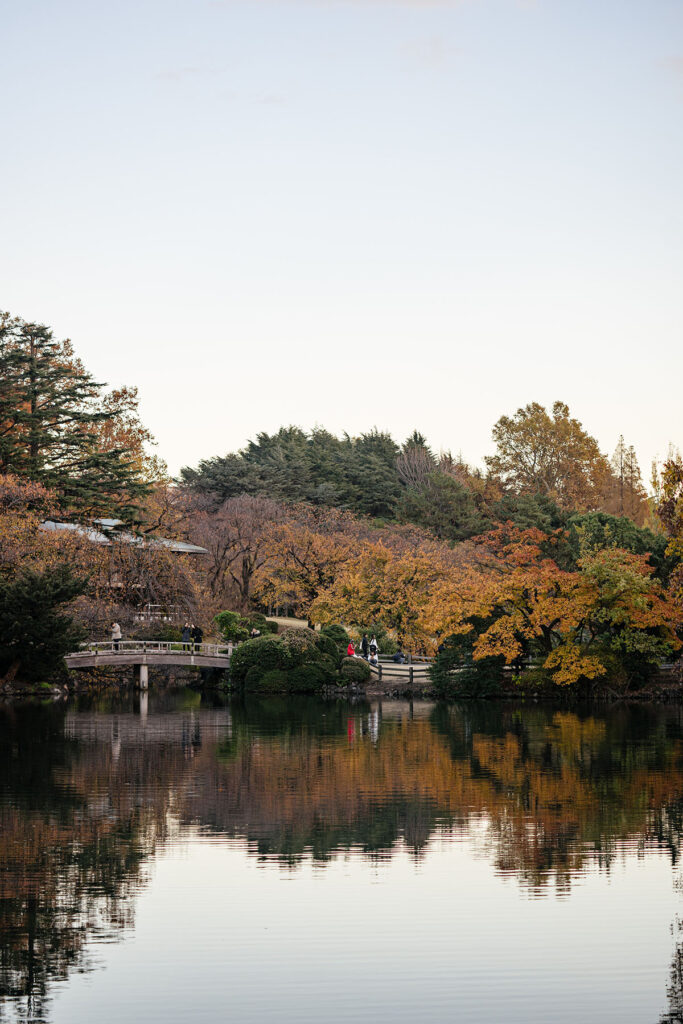
Winter
Even in the wintertime, there are plenty of flowers to see. The camellia and the white narcissus are blooming in December and January. And in February, you’ll find the Japanese apricot and witch hazel trees abloom.
Greenhouse
Right beside the Ookido Gate, you’ll find the large greenhouse. This greenhouse is home to many different tropical plants which bloom all year round. So even if there isn’t anything budding outside, you can always find something to look at in here. The interior feels like a jungle, with wild plants growing up to the ceiling and their leaves hanging down around you. The greenhouse is divided into different regional plants, so you can travel around the world in this one little building.
Where to Eat?
While there are some lovely restaurants in the surrounding area, the best thing to do inside the park brings a picnic! During cherry blossom season, this is called having a “hanami party” or sakura watching party. But it doesn’t need to be springtime to have a picnic. Just head down to your local konbini to pick up a variety of foods, ready to eat, and layout on a blanket to enjoy the beauty of the surroundings. Remember, there is no drinking or bringing in alcohol into this park.
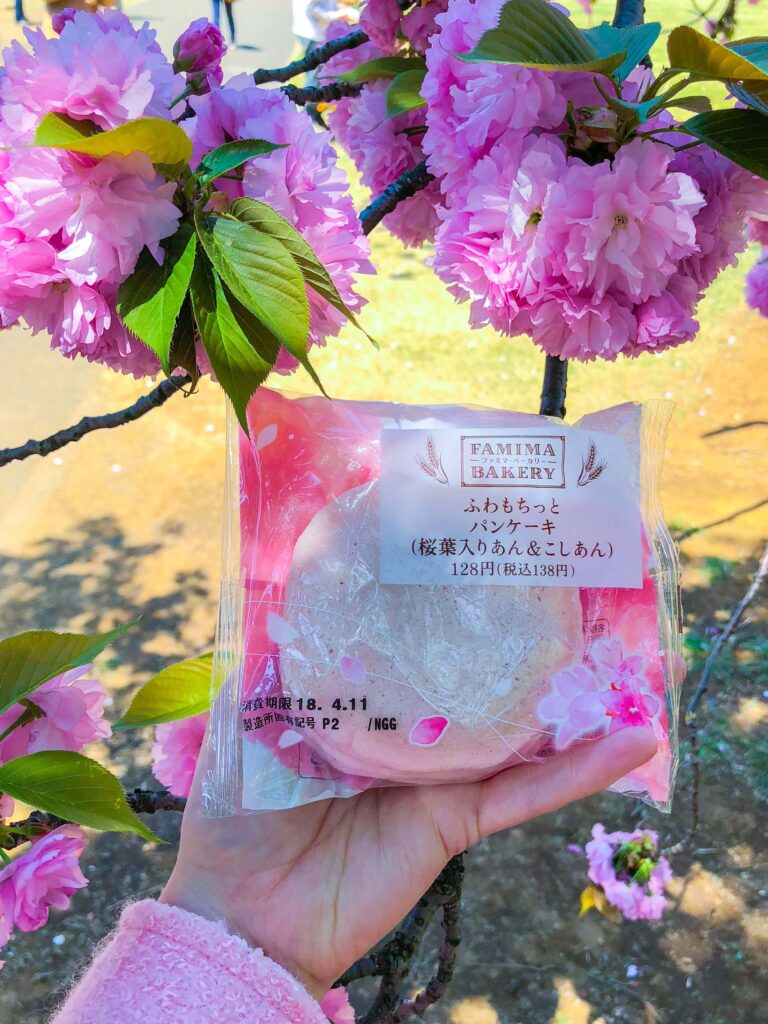
Rakuu-tei
If you haven’t brought any food with you, there are a few different rest houses and cafes dotted throughout the park. These are not always open, so be sure to check with the gate attendant to see which ones are serving customers. The Rakuu-tei (tea house) is a great place to have a cup of traditional macha inside a traditional tea room. This building is located beside the old plum trees in the Japanese garden. Here you can take a moment of relaxation as you enjoy a spot of tea with a seasonal Japanese sweets. The drink set will cost 700 yen, which is steep, but it’s all about the experience. If you’ve never had a tea set inside a garden-side tea room before this is your chance!
Shinjuku Gyoen is the perfect place to escape to if you feel like the crowded and busy nature of the city is getting to you. Shinjuku is one of the most populated parts of the city and the fact this peaceful oasis is hidden in the middle of it is fantastic. Be sure to pay this place a visit to find a moment of zen in your busy travel schedule.
Happy Travels, Adventurers
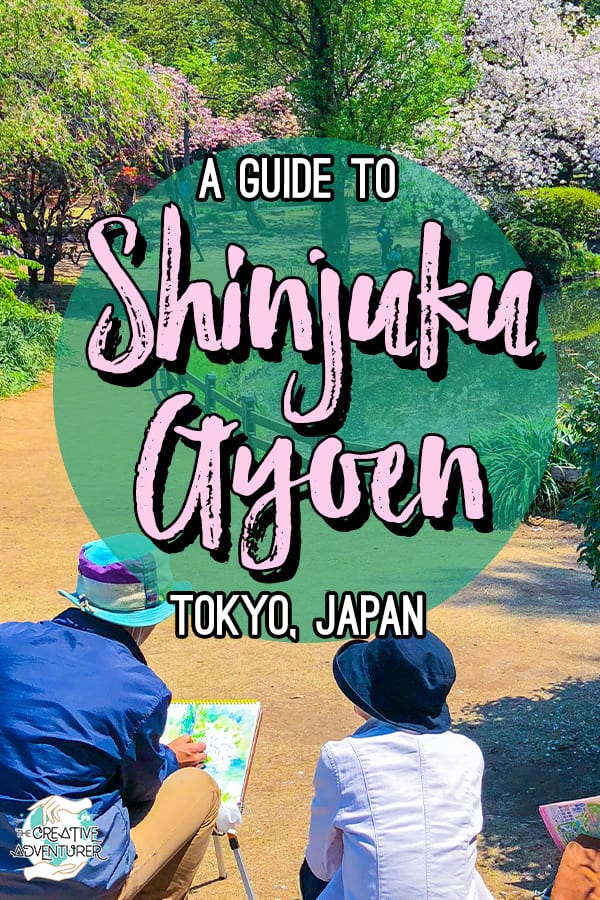
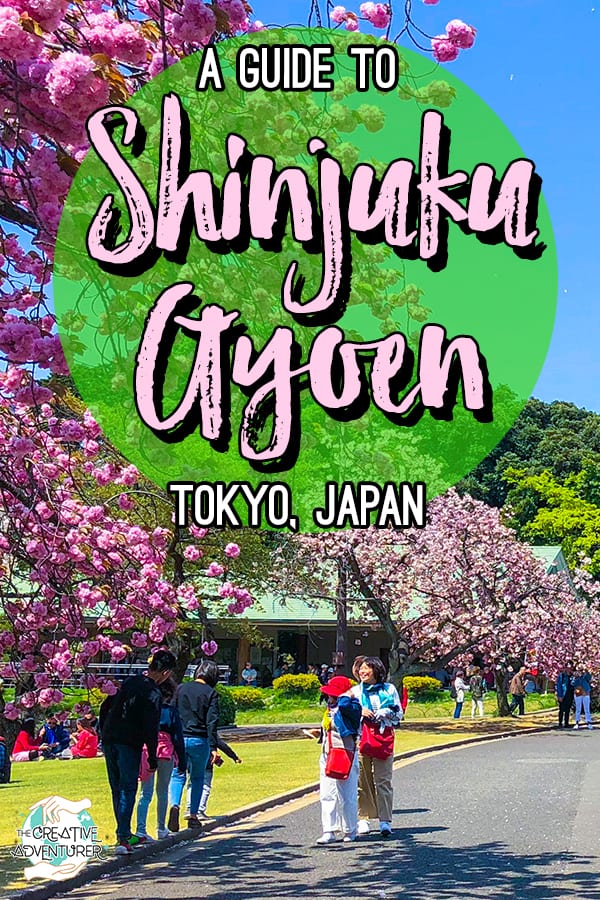
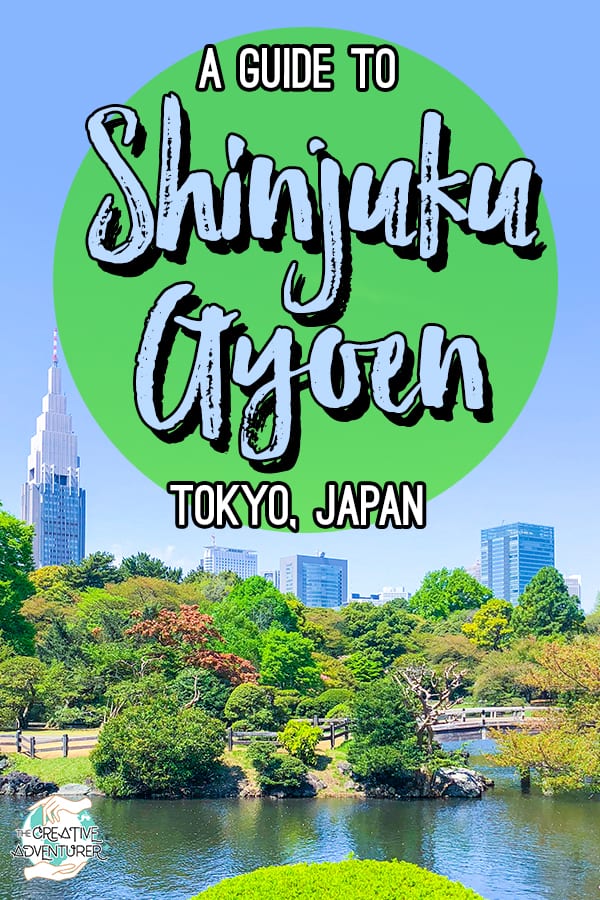
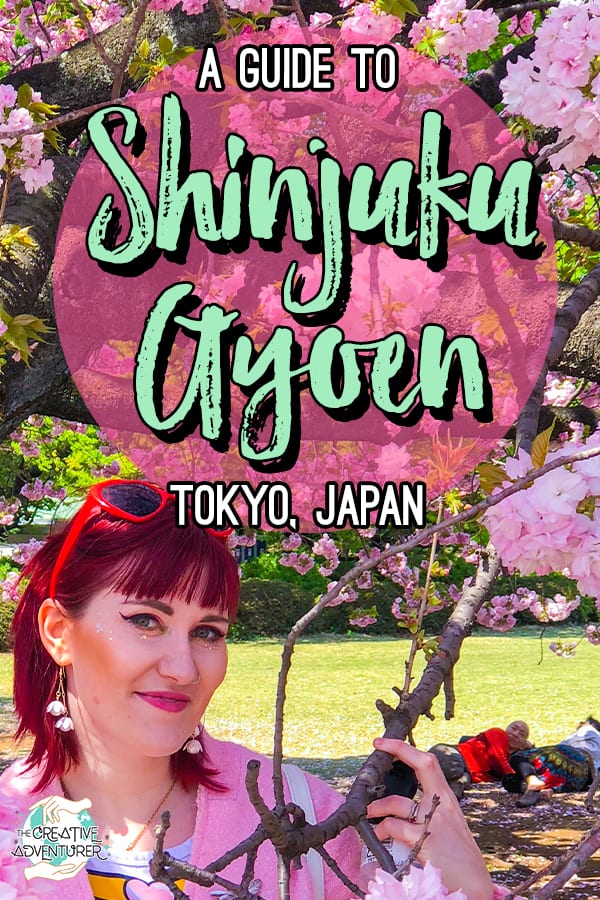
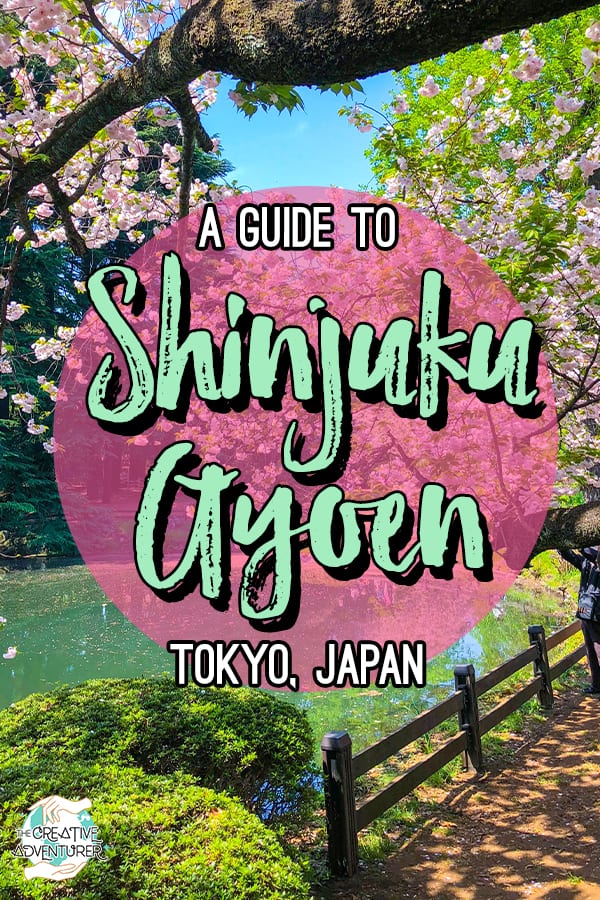
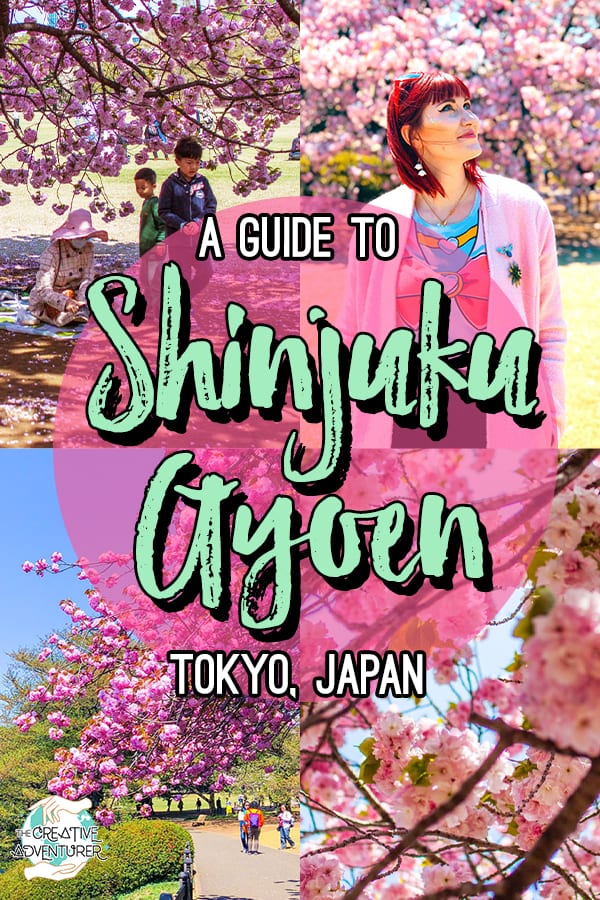


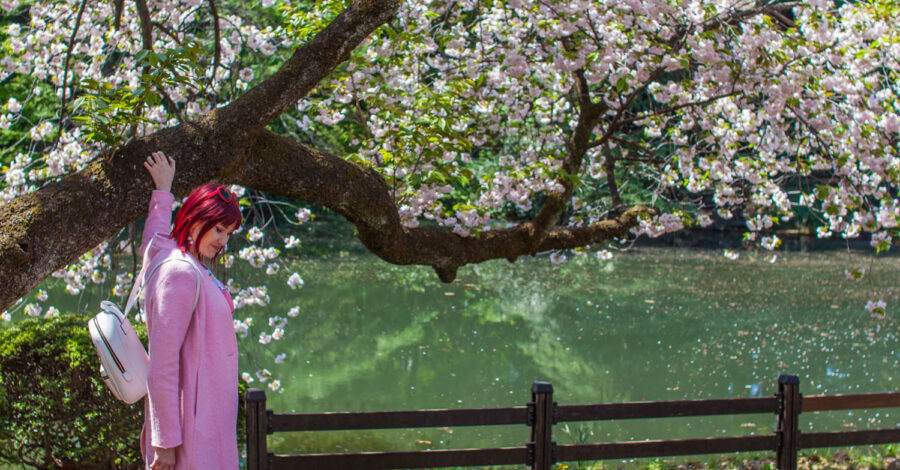

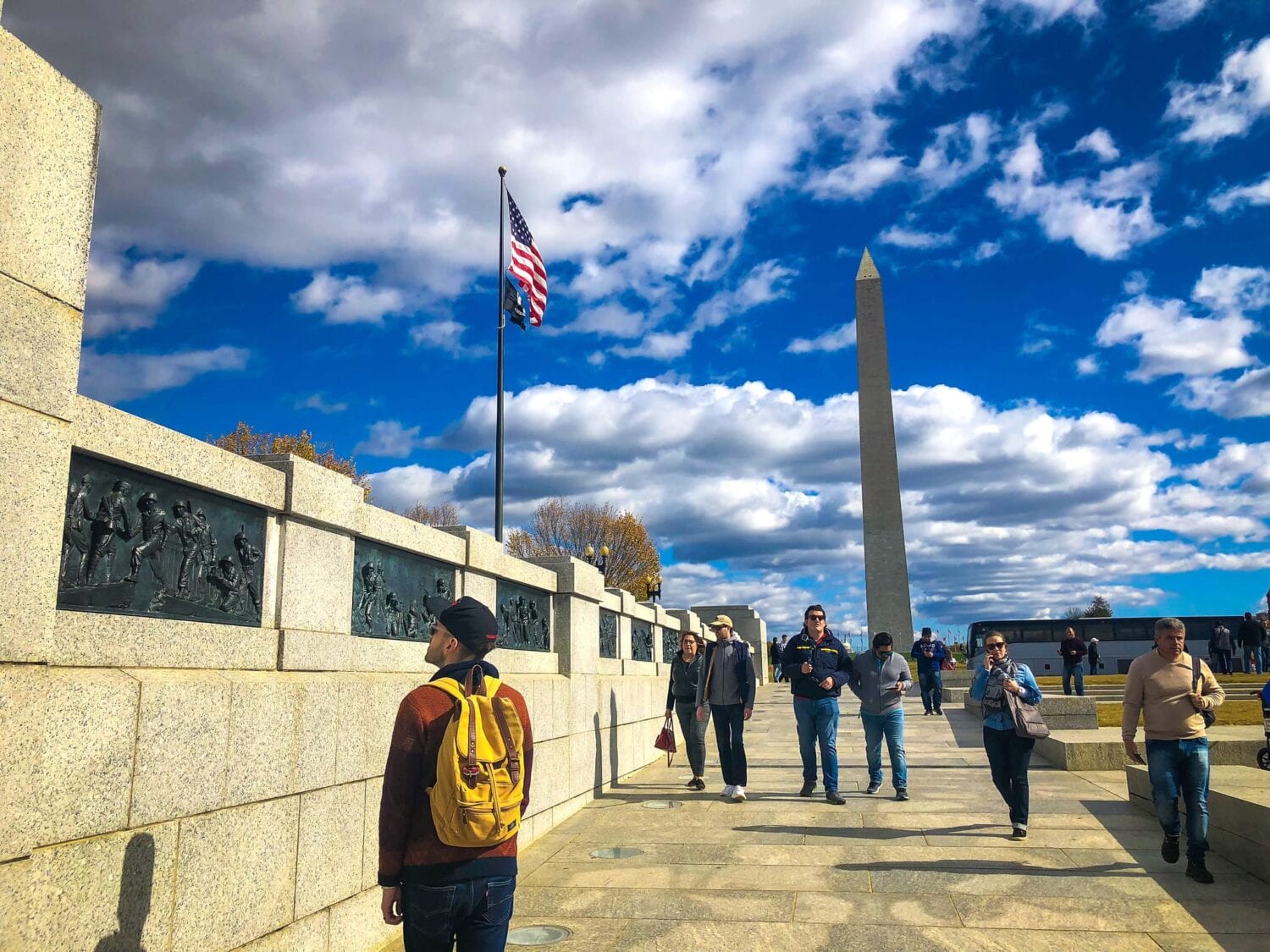
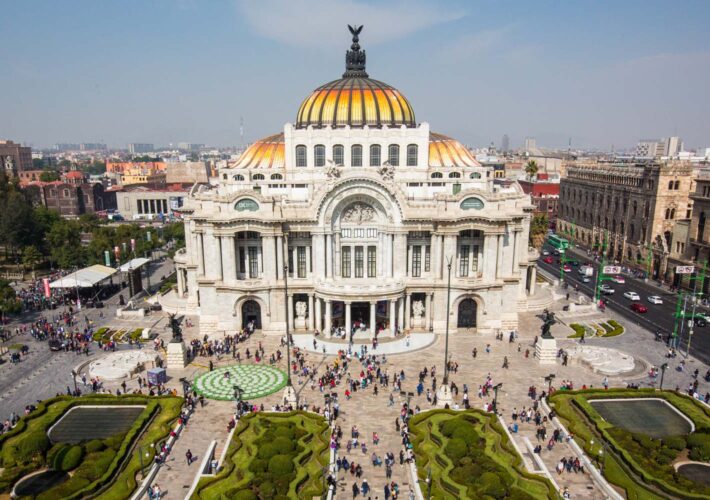

Leave a Comment